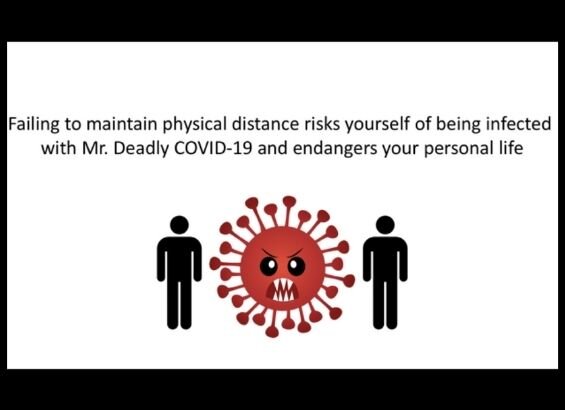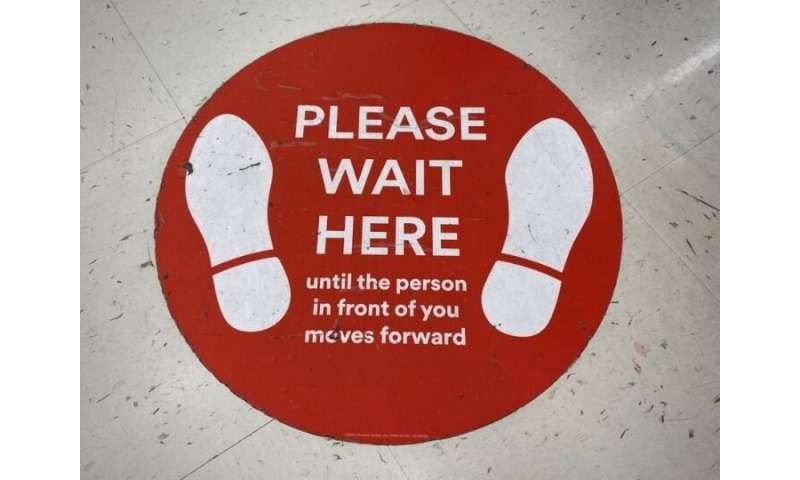#How fear encourages physical distancing during pandemic

“#How fear encourages physical distancing during pandemic”

Welcome to shopping during the coronavirus pandemic: customers clad in masks, slathered with sanitizer and surrounded by signage urging them to avoid close contact. Despite guidelines plastered on the walls and floors of grocery and retail stores encouraging customers to maintain six-feet of physical distance, many do not. A new study by researchers at the University of Houston Conrad N. Hilton College of Hotel and Restaurant Management identifies two key messaging components—negativity and anthropomorphism, or attributing human characteristics to nonhuman objects—could improve the persuasiveness of those appeals and trigger compliance.
Adjusting the messaging to stress the negative health outcomes associated with not following physical distancing guidelines, including the possibility of severe sickness or death, could more effectively persuade consumers to comply, according to the study co-authored by UH associate professor Priyanko Guchait and published in The Service Industries Journal. The study found that adding intimidating human attributes to the otherwise invisible coronavirus, such as a scary red face with long sharp teeth and tentacles, significantly strengthens that message.
“We don’t know how the coronavirus looks because we can’t see it, so how can people be afraid of it? Giving it human characteristics and making it look scary strengthens the effect when combined with the negative messaging,” said Guchait.
The researchers applied the regulatory focus theory, a persuasion theory in the field of psychology which focuses on framing the information either negatively or positively. Based on a hypothetical supermarket scenario, survey respondents were presented with different physical distancing messages that either used preventive or promotive language—some included a “Mr. Deadly COVID-19” scary face.

The preventive messaging emphasized potential costs and negative outcomes: If you don’t maintain physical distance, you could get infected and endanger your life. In contrast, promotive messaging highlighted potential benefits and positive outcomes: Maintaining physical distance protects you from infection and secures your life.
“Preventive language was significantly more effective in this study because people are persuaded by loss language, especially in high-risk, health-related situations. It’s the same thing with traffic accidents where people follow the rules because they know they could die. They experience fear and that’s why they follow traffic rules,” said Guchait, who collaborated on the research with visiting scholar The Khoa Do and Chen-Ya Wang from National Tsing Hua University in Taiwan.
Despite a consistent rise in coronavirus cases and deaths, many customers underestimate the importance of complying with physical distancing. A survey of grocery and food workers conducted by the United Food and Commercial Workers International Union at the beginning of the pandemic last spring, found that up to 85% of customers at grocery and retail stores did not practice physical distancing. Other surveys have revealed that people consistently underrate the risk of getting infected themselves or transmitting the virus to others.
The researchers hope the service industry will adapt and change how they frame and present physical distancing appeals, particularly small retail and grocery businesses which lack the resources to fully implement expensive health and safety interventions.
“This is more about playing with the human mind, which we know is more impactful than actual devices such as partitions or physical barriers,” said Guchait. “We encourage stores to add the picture of a scary coronavirus along with preventive messaging because it could save them money but, more importantly, it could save lives.”
Follow the latest news on the coronavirus (COVID-19) outbreak
Do The Khoa et al, Using regulatory focus to encourage physical distancing in services: when fear helps to deal with Mr. Deadly COVID-19, The Service Industries Journal (2020). DOI: 10.1080/02642069.2020.1831477
Citation:
How fear encourages physical distancing during pandemic (2020, October 21)
retrieved 21 October 2020
from https://medicalxpress.com/news/2020-10-physical-distancing-pandemic.html
This document is subject to copyright. Apart from any fair dealing for the purpose of private study or research, no
part may be reproduced without the written permission. The content is provided for information purposes only.
For forums sites go to Forum.BuradaBiliyorum.Com
If you want to read more Like this articles, you can visit our Science category.


